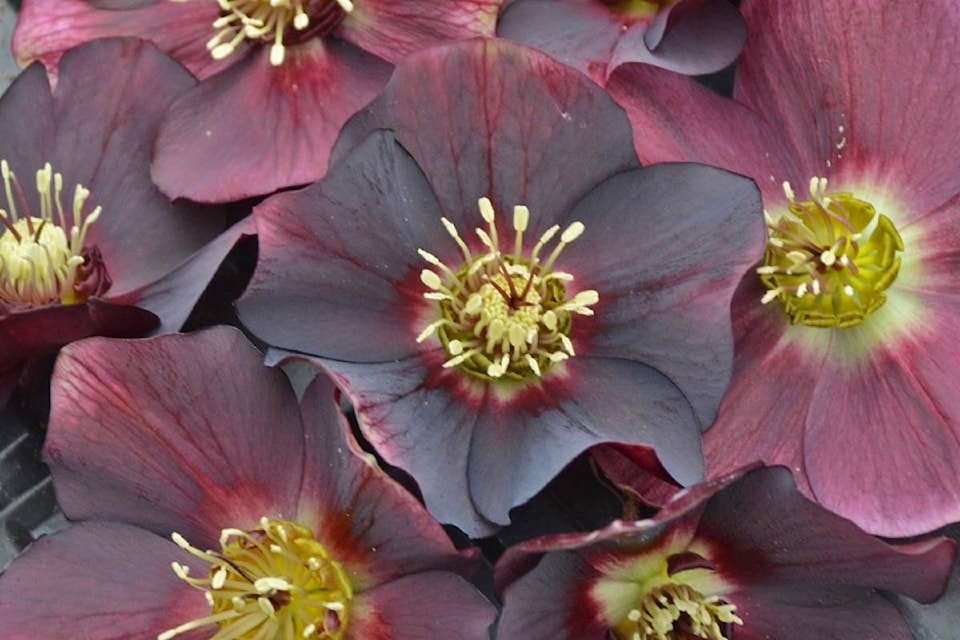A few years ago, I predicted the end of the hellebore craze after I started to see interest in this versatile perennial decline over a few years.
There were several reasons for this: a market awash in hundreds of varieties, many of which were only subtly different from one another; ever increasing prices and simple customer fatigue.
Don’t get me wrong, that popularity was definitely warranted given the broad colour range (slate blue and spotted, to deep burgundy reds), diverse flower form (single, double, anemone) and the long flowering period (December through to April) provided by the genus.
But over the last two growing seasons, I have noticed several factors that have led to resurgence in hellebores. First, the wholesale nurseries responded to the decline by growing fewer varieties and being a little more selective in their cultivars.
The price has also leveled off or declined in some instances in line with supply and demand.
But to be fair, this is an expensive perennial to propagate as the liners are costly (due to plant patents) and the crop often takes several years to size up, and time is money.
The other factor at play here is that, while gardeners have looked away from hellebores for the past few years, they have also realized that there are not many plant options that give us such an abundance of colour through the winter season.
Whether it’s a temporary display in pots by the front door or drifts of mass plantings on the forest’s edge, these evergreen perennials provide us with reliable colour through the adversity of winter weather and our occasional neglect.
And while there may not be as many variety choices as there were in past years, what can be found at your local garden centre are some dazzling new introductions and reliable favourites.
In particular, I would like to focus on three hybrid offerings; the Rodney Davey Marbled Group and two helleborus x hybridus, or Lenten Rose strains – the Wedding Party and Honeymoon series.
The Rodney Davey Marbled Group has been with us for just over five years and it has been the exception in hellebore sales, as they have consistently sold out year after year.
These are the creation of breeder Rodney Davey, from the U.K. His patience (some of these complex hybrids were 12 years in the making) brought us a perfect pairing of ornamental foliage and bold, upright flowers.
It began with ‘Penny’s Pink’ back in 2012 with its three-inch-wide mauve blossoms accented by prominent yellow stamens and spectacular marbled leaves of lustrous green with pink veining. In fact, many gardeners bought these on the strength of the foliage alone.
This was followed by ‘Anna’s Red’, ‘Molly’s White’, ‘Pippa’s Purple’ and ‘Glenda’s Gloss’ (white with violet edges). Trust me, all of these varieties are worthy of your garden.
Then there’s two relatively new series of Lenten Roses from Walter’s Gardens Inc., one of North Americas largest wholesale perennial growers. Both the Wedding Party and Honeymoon series have notable highlights, both in flower colour and form. The Honeymoon series is named after famous holiday destinations, such as ‘New York Night’ (black single), ‘Paris in Pink’ (frosted pink blooms), ‘Spanish Flare’ (light yellow with maroon centres), ‘Rome in Red’ (rich reddish-purple), ‘Rio Carnival’ (yellow with burgundy spotting), ‘French Kiss’ (raspberry pink with veining) and ‘Sandy Shores’ (apricot with rose-pink reverse).
Last but not least are the pinnacles of the Wedding Party, which include ‘First Dance’ (yellow with violet picotee), ‘Maid of Honor’ (double blush pink) and ‘True Love’ (double maroon).
Mike Lascelle is a local nursery manager and gardening author (hebe_acer@hotmail.com).
